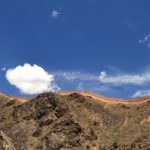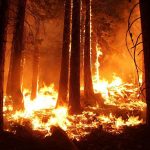The Future of Coal Seam Gas after the NSW Election
The New South Wales state election will be held on Saturday 28 March. James Horne discusses the future of coal seam gas, one of the major issues in this campaign.
Coal seam gas (CSG) is one of the most controversial issues bubbling through the New South Wales election campaign.
It’s a particularly hot topic in regional NSW, where communities and farmers have often felt their concerns have not taken seriously enough by the CSG industry and successive Labor and Coalition governments.
If the opinion polls are right, and the Baird government is returned, what is likely to happen next? And what are some of the key issues to watch, no matter whether you’re a supporter or an opponent of the CSG industry?
In November last year, the Baird government released its new Gas Plan. Its plan adopted all of the recommendations of an inquiry into the state’s CSG industry by the NSW Chief Scientist and Engineer, Professor Mary O’Kane. The new gas plan also followed the May 2014 suspension of gas explorer Metgasco’s right to drill a controversial exploration well.
Among other things, the gas plan commits the Baird government to:
- Undertake more science and collect and publish more information on CSG, including providing communities with much better information covering how exploration and production will impact their region
- Define much more closely which areas of the state are available for exploration
- Introduce world best practice regulations covering exploration and production, with the EPA becoming the new regulator for gas exploration and production
- Legislate that the financial benefits from gas exploration and production are shared with landowners and communities
- Secure NSW gas supplies, by diversifying sources of supply and driving national reforms.
But will the new plan be sufficient to sufficiently rekindle community confidence in the local industry for gas exploration to recommence, and see new projects brought into production? Or are incidents like AGL’s recent suspension of production at Waukivory pilot project evidence of further problems ahead?
The new policy framework gives much greater weight than before to getting the community on board. Even so, there remain three critical areas to watch.
First, on water resources, the NSW government should carefully examine the National Assessment Of Chemicals Associated With Coal Seam Gas Extraction In Australia and the US Environmental Planning Agency’s report on hydraulic fracturing and drinking water, which are both due to be completed within months. It should also take advantage of the national Bioregional Assessments that are currently being undertaken in northern NSW.
The O’Kane inquiry’s report suggests risks to water resources are manageable. But do the above reports back up this judgment? For example, is the mobilisation of BTEX chemicals (which stands for benzene, toluene, ethylbenzene and xylene) likely to be a major issue with hydraulic fracturing in CSG?
These national and international studies will provide communities with much needed peer-reviewed science on risks associated with CSG production. They will enable stress testing of the O’Kane conclusions. The Bioregional Assessments will also provide important baseline information, should any projects be approved for production in NSW.
Second, experience over recent years shows how much damage can be done to industry if it fails to secure strong community support, and particularly if it shows little respect for local views. That for the most part requires a commonsense approach to explaining risk, rather than belittling community concerns. In recent years, the CSG industry has performed well below what is expected when it comes to community engagement – and it’s now reaping the consequences. Restoring confidence after it has been lost will require concerted sensible and transparent behaviour. For example, AGL’s January 2015 media release noted that the Waukivory Pilot Project was being suspended “because of community concern about the detection of BTEX” chemicals. Surely AGL should be concerned in its own right?
Finally, NSW will need to be mindful of the total regulatory costs and royalty charges it imposes. Its overall plan needs to determine whether there is a sweet point between competing demands of world-class regulation and protection of the environment, compensation to landowners and communities affected by new unconventional gas projects, weighed up against minimising prices to consumers and supply availability. This is particularly the case with the recent massive fall in world oil and gas prices.
As unlikely as it may sound, one approach would be for NSW to show leadership in national regulatory forums, by seeking COAG support to put in place sensible national environmental regulations, assuring communities that their interests will be looked after.
Looking after groundwater resources must be at the top of that list for protecting community and environmental interests. National rules and consistent behaviour, including strong independent monitoring and oversight of groundwater resources, would contribute to community confidence.
Whichever party forms government after the NSW election, there is plenty of room for both companies and communities to carefully examine the evidence on CSG and its implications, and for governments to take decisions based on them in the best interests of the wider community.
A longer version of this article first appeared in The Conversation. It was shortened by the author and is republished with his kind permission.
James Horne held senior executive positions in the Australian government for over 20 years. He retired from the Australian public service in 2011 and is now the Principal of James Horne and Associates.














miamylimo
June 29, 2015 at 2:53 am
Inevitable circumstances
Oil and gas price hike is inevitable and the consumer cannot do about it but to conserve energy. Instead of using private owned vehicles why not travel with public transport or hire a car rental service in your area. That way, we can lessen air pollution.